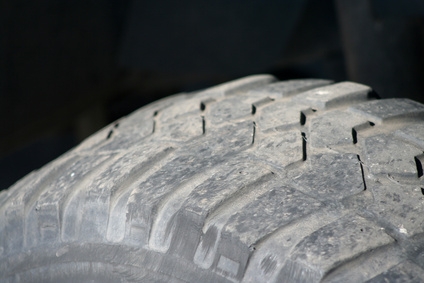
Vehicle tires need as much maintenance attention as the rest of the vehicle. Unattended tire maintenance can lead to improper tire wear which leads to more frequent tire replacement. Improper tire wear can affect road noise and safety issues such as inadequate handling, braking, or traction, especially in wet or slippery conditions. Tire rotation gives your tires a longer lifespan and allows you to observe other maintenance concerns common with uneven tire wear, such as wheel alignment, suspension or ball joint problems. Tire pressure and wheel balancing should also take place at each rotation interval. Check your vehicle maintenance manual for recommended tire rotation patterns and intervals, but recommendations differ with individual vehicle and tire choice.
If your vehicle manual is not available for reference, you should rotate your tires every 5,000 to 7,500 miles. Remember your tire rotation by matching the rotation with your regular oil changes. If you change your oil every 3,000 miles, rotate tires every other oil change. Tires will wear differently on 4WD and AWD vehicles and need rotation at 4,000-mile intervals on these vehicles.

Most vehicles have the same size tires on all four corners of the vehicle. Three cross rotation patterns are common for this majority of vehicles. The forward cross pattern is for front wheel drive vehicles and the rearward cross pattern is for rear wheel drive and 4WD vehicles. In the forward cross rotation the rear tires move forward and cross to the opposite side of the vehicle, while the front tires move straight back and do not switch vehicle sides. In the rearward cross rotation the front tires move back and cross to the opposite side of the vehicle, while the rear tires move straight forward and do not switch vehicle sides.
The alternate X pattern may be used with front-wheel, rear-wheel or four-wheel drive vehicles and with this pattern the front tires cross over to the opposite side of the vehicle and move to the rear and the rear tires cross over to the opposite side of the vehicle and move to the front. If incorporating a full size spare tire into any rotation, place the spare tire in the rear passenger position and the tire that would have been rotated there will now become the new spare.

Depending on the type of tire used, two additional patterns now await the high performance and trendy tires. Rotation from side to side is designed for tires that are non directional and are a different size from front axle, compared to the rear axle. Non directional tires may spin in either direction. Snow studded tires are non directional tires, but must remain where they'll be driven by an axle to perform properly. Studded tires should only rotate side to side unless mounted on a 4WD. Front to rear rotations are for tires or wheels that may only spin in one direction but are the same size from front to rear. Directional tires must remain on the same side of the vehicle.
